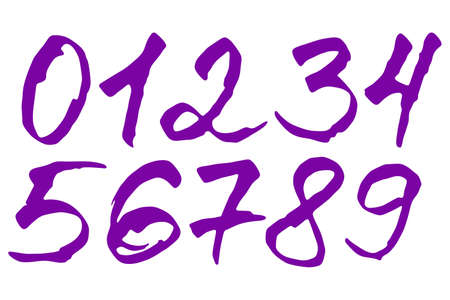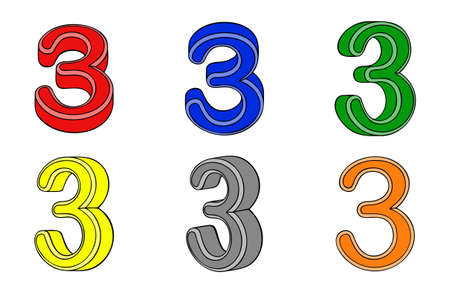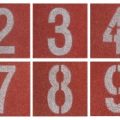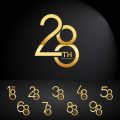The Heart Line: An Overview
In the world of palmistry, the heart line stands out as a key indicator of emotional depth and relationship tendencies. Running horizontally across the upper part of the palm, this line is often seen as a map to one’s inner feelings, romantic inclinations, and capacity for love and connection. In American culture, where relationships and emotional wellness are frequently discussed topics—whether in self-help books, therapy sessions, or everyday conversation—the symbolism of the heart line resonates deeply. It offers individuals a tangible starting point to reflect on their own emotional journeys and interpersonal dynamics. By reading the heart line, many Americans seek insights into how they express affection, navigate intimacy, and pursue happiness within their personal lives. Understanding the heart line not only enriches self-awareness but also highlights cultural values such as openness, authenticity, and personal growth that are highly prized in the United States.
2. Love and Partnership: American Perspectives
In the United States, attitudes toward love, dating, and marriage are shaped by a unique blend of cultural ideals, historical shifts, and personal aspirations. The heart line in palmistry, which is believed to reflect an individual’s emotional tendencies and relationship styles, can be intriguingly linked to these prevailing American values. Traits observed in the heart line—such as its depth, curve, and continuity—are often interpreted through the lens of openness, independence, and the pursuit of authentic connection that characterize American romance.
Heart Line Traits and U.S. Relationship Values
Americans tend to value open communication, emotional expression, and equality in partnerships. These qualities are mirrored in heart lines that are clear, well-defined, and gently curved toward the fingers, suggesting warmth and readiness for intimacy. Conversely, fragmented or chained heart lines may point to emotional complexity or caution—traits sometimes seen among individuals who prioritize self-reliance or have experienced shifting norms around commitment.
Common Heart Line Patterns
| Heart Line Trait | Associated American Attitude |
|---|---|
| Straight & Clear | Directness in expressing feelings; preference for honest relationships |
| Curved Upward | Warmth and sociability; openness to new romantic experiences |
| Broken or Chained | Cautiousness; possible past heartbreaks or emphasis on independence |
The Impact of Modern Dating Culture
The rise of online dating and changing views on marriage have made flexibility and adaptability key features of the American relationship landscape. Heart lines that show branching or multiple forks may reflect this diversity in romantic approaches—symbolizing the freedom to explore different connections before settling down. As such, reading the heart line offers not only a glimpse into personal emotional wellness but also echoes broader societal trends influencing love and partnership in contemporary America.

3. Emotional Wellness in Modern America
In today’s fast-paced American society, emotional wellness has become a major topic of conversation and concern. The heart line, which runs across the palm just below the fingers, is often read in palmistry as an indicator of emotional health and relational tendencies. Many Americans are turning to holistic and alternative perspectives—like palm reading—not only for curiosity but also as tools for self-reflection and emotional understanding.
The Heart Line and Emotional Wellness
American culture increasingly recognizes the importance of mental health, therapy, and emotional intelligence. Reading the heart line can be seen as a symbolic way to explore how individuals process their emotions, deal with stress, and connect with others. For example, a deep, clear heart line is sometimes interpreted as a sign of openness and healthy emotional expression—qualities that align well with current American values around authenticity and vulnerability.
Self-Care: A Cultural Shift
Over recent years, self-care has shifted from being seen as indulgent to essential. Americans now prioritize practices like mindfulness, meditation, and regular check-ins with their own feelings. In this context, examining the heart line becomes a metaphorical act of self-care—a way for people to tune into their emotional needs and assess whether they are nurturing themselves enough. This mirrors the broader cultural push towards prioritizing personal wellbeing.
Mental Health Awareness and the Heart Line
The growing conversation around mental health in the U.S.—from destigmatizing therapy to promoting open dialogue about emotions—resonates with the insights people seek when reading their heart line. While not a substitute for professional help, palmistry can serve as a prompt for deeper conversations about emotional patterns, relationships, and mental wellness. It encourages individuals to look inward, recognize signs of stress or imbalance, and take steps toward healing—an approach increasingly embraced across America.
4. Case Studies: Heart Lines in Real Life
Across the United States, people from diverse backgrounds have turned to palmistry as a tool for self-reflection and relationship insight. The heart line, running across the upper palm, is often interpreted as a mirror of one’s emotional landscape. Here, we present anonymized real-life examples that illustrate how Americans find personal meaning and relational guidance through the reading of their heart lines.
Case Study 1: Navigating Emotional Openness in New York
Amanda, 32, Marketing Professional
Living in Manhattan, Amanda always found it challenging to express her emotions openly in relationships. During a casual gathering, a friend read her palm and pointed out that her heart line started under her index finger—a classic sign of someone who values deep connections but may be reserved with feelings. This moment sparked Amanda’s journey toward emotional openness. She began journaling about her feelings and gradually shared more with her partner, leading to improved trust and intimacy.
Case Study 2: Healing After Divorce in California
Michael, 45, Teacher
After a difficult divorce, Michael sought ways to understand his patterns in relationships. At a wellness retreat in Los Angeles, he participated in a palmistry workshop. The practitioner noted that Michael’s heart line was long and curved, suggesting warmth and compassion but also vulnerability to heartbreak. Michael reflected on his tendency to give too much without setting boundaries. This realization helped him approach future relationships with greater self-awareness and emotional balance.
Case Study 3: Strengthening Family Bonds in Texas
Susan, 54, Small Business Owner
Susan noticed that her teenage daughter was struggling emotionally. Inspired by family traditions and open-mindedness toward alternative practices common in Austin, they attended a mother-daughter palmistry session. Susan learned that both she and her daughter had parallel heart lines—often interpreted as a sign of empathy and shared emotional wavelength. This discovery became a conversation starter, helping them discuss feelings more openly and strengthen their bond.
Summary Table: Insights Gained from Heart Line Readings
| Name (Pseudonym) | Location | Heart Line Feature | Main Insight/Outcome |
|---|---|---|---|
| Amanda | New York | Starts under index finger | Became more emotionally open with partner |
| Michael | California | Long & curved | Learnt to set boundaries post-divorce |
| Susan & Daughter | Texas | Parallel lines | Improved family communication & empathy |
Cultural Reflection: Blending Tradition with Modern Self-Discovery
These cases highlight how Americans use the heart line not just as mystical fortune-telling, but as a culturally adaptive tool for reflection and growth. Whether seeking healing after loss or striving for stronger relationships, many find value in blending palmistry’s insights with evidence-based approaches to emotional wellness.
5. Critiques and Cautions: A Scientific Lens
While palmistry, and specifically the reading of the heart line, holds a place in many American conversations about relationships and emotional wellness, it’s important to acknowledge the critical perspectives often voiced by the scientific community in the U.S. Palmistry is frequently viewed through a skeptical lens, with experts questioning its empirical validity and warning against confusing traditional beliefs with proven psychological or medical advice.
The Skeptical Standpoint
Many scientists and psychologists in America point out that there is no verifiable evidence linking the lines on one’s palm to their emotional health or romantic destiny. The consensus among researchers is that any perceived accuracy in palm readings often stems from the Forer effect—where individuals find personal meaning in vague or general statements. This phenomenon raises concerns about relying on palmistry for serious relationship decisions or mental health guidance.
Empirical Reasoning vs. Tradition
From a scientific perspective, understanding relationships and emotional wellness involves considering well-established psychological theories, such as attachment styles, emotional intelligence, and communication patterns. These frameworks are supported by decades of research, clinical observation, and statistical analysis. In contrast, palmistry’s roots are largely anecdotal and lack peer-reviewed studies to back its claims. Nonetheless, for many Americans, palmistry remains a culturally meaningful practice—a way to reflect on life’s challenges through symbolism and storytelling.
Promoting a Balanced Perspective
To foster a healthy balance between tradition and science, it’s crucial to approach heart line readings as a complementary tool rather than a substitute for professional guidance. While exploring the symbolism of the heart line can spark personal reflection and even comfort, American readers are encouraged to seek evidence-based resources when facing significant relationship or emotional issues. Respecting both cultural traditions and scientific reasoning allows individuals to draw wisdom from multiple sources without disregarding the importance of critical thinking.
6. Practical Tips for Reading the Heart Line
Ready to try your hand at reading your own heart line? It’s easier than you might think! Americans love a good self-improvement project, and palmistry is just another way to get in touch with your inner world. Here are some practical, down-to-earth tips for interpreting your heart line, all with a nod to familiar U.S. cultural references.
Find Your Heart Line
First things first: turn your non-dominant hand palm-up (most traditions say it shows your natural emotional tendencies). Look for the line that runs horizontally below your fingers—usually starting under the pinky and stretching towards the index or middle finger. Think of it as your “emotional timeline,” much like scrolling through old Facebook memories.
Check the Shape and Length
If your heart line curves upward like a classic baseball swing, it suggests openness and warmth in relationships—a trait highly valued in American social circles. A straight line (think Route 66 stretching across the map) may signal someone who values logic over emotion. There’s no right or wrong here; just different “routes” to connection.
Notice the Depth and Clarity
A deep, clear line is like a strong Wi-Fi signal—it usually means you’re confident and consistent in expressing emotions. A faint or broken line might suggest periods of emotional uncertainty or growth, similar to navigating college life or career changes in the U.S.
Observe Endings and Branches
If your heart line ends under your index finger (the “leadership” finger), you likely seek meaningful, long-term partnerships—think of committed couples you admire in pop culture, like Michelle and Barack Obama. If it ends under the middle finger, independence may be key for you, reflecting America’s love for personal freedom.
Look for Special Marks
Small branches pointing upward can symbolize happy new relationships or opportunities—like meeting someone special at a Fourth of July barbecue. Downward branches may suggest emotional challenges; remember, everyone faces ups and downs, and resilience is an American hallmark.
Use Heart Line Insights Thoughtfully
Palm reading isn’t about telling fortunes—it’s about self-reflection. Use what you learn as a conversation starter (great for coffee dates or book clubs), or as inspiration for journaling about your relationship patterns. Remember: emotional wellness is a journey, not a destination—just like driving across America on an open highway.


